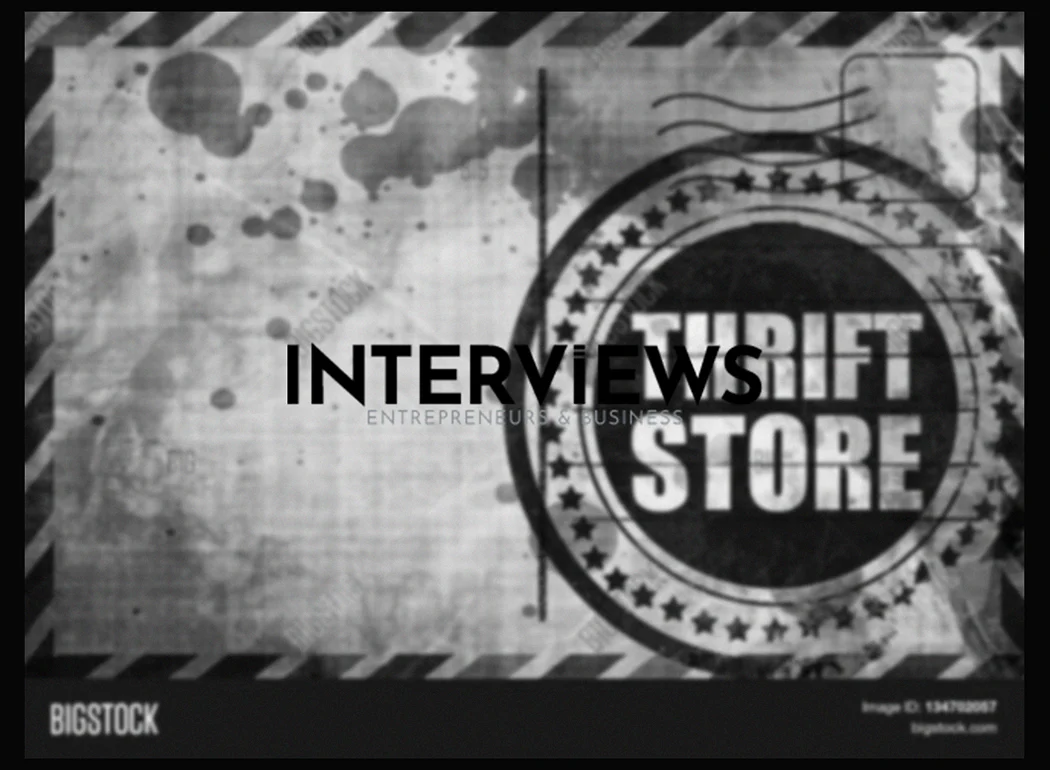Thinking of Diving into the Thrift Store Goldmine? Let’s Talk Profit, Pitfalls, and Piles of Clothes.
You want to open a thrift store? Good choice! You can enjoy vintage items and unique furniture. Sounds fun, right? But before you dream of piles of denim, let’s discuss if this venture will truly benefit your wallet – and what might drain it fast.
Is Owning a Thrift Store Actually Profitable? Spoiler: It Can Be!
Thrift stores can be quite profitable. Wondering why? Let’s break it down:
- Low Cost of Goods Sold (COGS): Think about the source. It’s donations! People give you merchandise. Your COGS can be lower than expected. Lower COGS mean higher profits. Simple math.
- Markup Potential: Since you get inventory at low prices, your markup can be substantial. Price competitively and still earn good profit. Finding a twenty-dollar bill in jeans is not daily, but can happen here.
- Recession-Proof: Thrift stores do well during tough economic times. When money is tight, shoppers look for affordable options. Your items become others’ needs.
- Growing Secondhand Market:The secondhand industry now earns billions. Many prefer used goods. Join the trend.
- Sustainability: Thrifting helps the planet amid climate worries. You sell clothes while promoting eco-friendliness. This attracts responsible consumers.
Revenue Realities: Revenue varies greatly. A small shop can bring in $2,000 to $5,000 monthly. Larger stores in prime areas can see up to $30,000. Location and a touch of thrift store magic matter.
Hold Your Horses, It’s Not All Discount Designer Handbags and Easy Money: The Challenges
Before leaving your job to own a thrift store, slow down. It’s not all happy vibes and vintage shirts. Consider the hurdles. They are character tests or annoying issues.
- Operating Costs: Rent, utilities, wages, marketing. Bills that do not care about your vintage vinyl collection. Money goes fast if you’re not cautious.
- Inventory Chaos: Brace for donations. You will sort through tons of clothes. Some are great; others not so much. Create systems to manage the influx and highlight the best items.
- Competition: Many rivals exist. You compete with-for-profits and large organizations like Salvation Army, who have established networks.
- Staffing Woes: You need reliable staff to sort goods and assist customers. Not easy to find people who understand thrift store culture.
- Shoplifting: It happens everywhere. Managing theft is part of retail life. Stay alert.
Profitability Game Plan: Strategies to Stack Your Bills (The Good Kind)
Challenges exist, but don’t worry! There are ways to exceed expectations. Let’s discuss increasing profits:
- Smart Pricing: Set attractive prices for buyers while ensuring profit for yourself. It requires careful planning.
- Marketing Efforts: Use social media wisely. Engage through local events. Ensure your thrift store gains visibility.
- Online Sales: Don’t limit sales to foot traffic. Sell through online sites like Etsy or eBay to reach more customers.
- Focus on Quality: Curate inventory carefully to attract buyers looking for quality, not just any items.
- Reduce Costs: Cut unnecessary expenses to maximize profits without sacrificing customer service.
So, You Want to Actually Open a Thrift Store? Nitty-Gritty Time.
Prepared to get serious? Let’s cover starting a thrift store. It involves more than just love for clothes; it requires managing a business.
- Initial Investment: Starting costs range from $20,000 to $150,000. This includes renovations, permits, and first inventory. It can accumulate quickly.
- License Needed: You must acquire a business license. Compliance is crucial for legal operation.
- Revenue Transparency: Monthly income varies widely. Smaller locations might earn $2,000 to $5,000 while larger stores can reach $30,000 monthly. Set realistic expectations.
- Fair Pricing: Pricing matters significantly. Customers enjoy reasonable prices and return for goodwill.
- Consider LLC: An LLC offers protection but isn’t mandatory. It can reduce future issues.
Thrift Store on a Shoestring? Starting with Next to Nothing (or Close To It).
Tight budget? Don’t worry! You can still pursue your thrift store ambitions in smart ways! Starts can be tough but doable. Here’s how:
- Business Strategy:
- Create a Business Plan: This serves as your foundation. Outline goals, target audience, and operations for funding and clarity.
- Niche Focus: Don’t cater to everyone. Choose a specialty like vintage clothing or furniture and stand out.
- Sourcing Inventory:
- Ask for Donations: Approach local organizations for contributions. Build community bonds for support.
- Treasure from Sales: Weekend garage and estate sales hold treasures to be found. Arrive early and bargain respectfully.
- Networking in Thrift Community: Connect with fellow thrifters for tips and shared resources.
-
- isn’t only for big companies; it’s for those who wish to be remembered.
- Social Media Savvy – Free Marketing Magic: Use social media. Instagram, Facebook, TikTok – showcase your items, connect with buyers, build a community. It’s effective and free!
- Pricing & Sales Prowess:
- Pricing Precision – Market Research Matters: Investigate prices of similar products. Set competitive prices, but ensure you make profit. Knowledge is power.
- Sales & Promotions – Entice and Delight: Discounts and promotions attract customers. Create themed sales or loyalty programs. Get imaginative to boost traffic and sell stock.
- Legal & Operational Logistics:
- Licenses & Permits – The Unavoidable Paper Chase: Acquire necessary licenses and permits. It’s crucial for online and physical sales. Complete this step!
- Payment Processing – Get Paid, Legally and Easily: If you sell online, establish secure payment processing. Explore options like PayPal, Stripe, or Square for reliability.
- Start Small, Scale Smart:
- Quality Focus – Better to Be Small and Amazing than Big and Mediocre: Focus on quality over quantity. Delighted customers return and recommend.
- Customer Service Champion – Make ‘Em Feel Like Vintage Royalty: Exceptional customer service builds loyalty. Satisfied customers repeat and spread the word.
- Adapt & Iterate – Be a Business Chameleon: Stay adaptable. Respond to customer feedback and market changes. Thrift store success changes dynamically.
7 Steps to Thrift Store Stardom (Non-Profit Edition, But Still Relevant):
These steps target non-profits, yet the principles apply to all thrift stores:
- Create a Business Plan (Yep, Still Important).
- Establish Your Nonprofit (If That’s Your Path).
- Choose Your Thrift Store Type (Niche it Down!).
- Secure a Location (Physical or Digital).
- Collect Inventory for Sale (Sourcing, Donations, etc.).
- Set Up a Payment System (Collect Payments!).
- Plan and Publicize Your Grand Opening (Make an Impact!).
Inventory Intel: Where Does All This Stuff Actually Come From?
The big question! Thrift stores find treasures from various sources:
- Donations (The Key Contributor).
- Consignment (Partnerships and Profit Sharing).
- Flea Markets (Rich with Gems).
- Yard and Garage Sales (Weekend Finds).
- Estate Sales (Stories in Clothing).
- Auctions (Competitive Fun).
- Wholesalers (Bulk Buys for Needs).
- Abandoned Storage Units (Risk vs. Reward).
- Commercial Clothing Bales (“Surprise Bundles”).
- Vintage Wholesale Suppliers (Curated Collections).
Pricing Puzzles: How Do Thrift Stores Actually Price Stuff?
Thrift store pricing seems random but is calculated. They assess:
- Item Condition (Mint = Higher Price).
- Brand (Designer = Higher Value).
- Demand (Trendy = Faster Sales).
- Market Value (Worth Elsewhere?).
The aim is a balance: affordable prices that move stock and ensure profits. It’s a tricky mix of good deals and business savvy.
Thrift Store Flipping: A Side Hustle or Scalable Strategy?
Thrift store flipping means buying low and selling high. Here’s how:
- Sourcing – The Hunt for Hidden Treasures: Explore thrift stores, consignment shops, garage sales. Enjoy the chase.
- Assessment – The Item Intel Checklist:
- Condition (Is it sellable?).
- Brand (Is there appeal?).
- Resale Potential (Can it generate profit?).
- Resale – From Thrift Store to Online Marketplace: Clean, repair, photograph items as needed. Presentation is crucial.
- Marketing – Spread the Word, Sell the Goods: Use eBay, Facebook Marketplace, local consignment shops for selling.
- Profit – The Goal of the Game: Buy low, sell high, enjoy the profit. Sounds simple; requires effort.
- Ethical Musings – Flipping with a Conscience:
- Sustainability (Giving items new life is positive).
- Accessibility (Unique items for more people is good).
- Raising Prices? (A Hot Issue): Some believe flippers inflate prices, making thrifting tougher for those in need.
Store Management & Operations: The Day-to-Day Grind (and Glory).
Managing a thrift store involves more than sorting clothes. It requires systems:
- Licensing and Permits – Legality Logistics: Acquire a general business license and sales permit early.
- Inventory Management – Keeping Stock Organized: Source and track inventory continually. Use creativity and efficient systems.
- Store Layout – Shopping Sanctuary or Chaotic Clutter? Organize items logically for a pleasant shopping experience.
- Attracting & Keeping Customers – The Lifeblood of Your Business: Design enticing displays and seasonal items to draw customers.
- Display Strategies – Visual Merchandising Magic: Showcase top items clearly, ensure pathways, craft inviting displays.
Who’s Your Thrift Store Tribe? Understanding Your Target Audience.
Your target audience influences your store’s success. Who are they?
- Gen Z – The Thrift Generation:
- Money-Saving (Strong Incentive).
- Sustainability (Eco-Friendly Consumers).
- Creative Expression (Seeking Unique Styles).
- Social Connection (Thrifting as Social Experience).
- Nostalgia (Vintage Is Trendy).
Why Are Thrift Store Prices Creeping Up? The Price Hike Puzzle.
Noticing rising thrift store prices? Reasons include:
- Higher Demand (Thrifting is Popular Now).
- Limited Supply (Donations Vary, Vintage Items Scarce).
- Operating Costs Rise (Rent, Utilities, Wages – Everything is Pricier).
- Competition from Resale Apps (Online Marketplaces Affects Donations).
- Inflation & Economic Factors (Prices Increase Generally).
- Business Models (For-Profit vs. Non-Profit Goals).
- Market Value (Pricing Reflects Perceived Value).
Where Does the Money Actually Go? For-Profit vs. Non-Profit Thrift Stores.
The question arises: who benefits from your purchases?
- For-Profit Thrift Stores: Operate like typical retail shops, focusing on profit. Some may also give to charity.
- Non-Profit Thrift Stores: Profits support charities directly. Shopping here helps causes.
This overview captures thrift store ownership’s essence. It’s a venture full of heart, promise, and effort. Now, step out and thrift responsibly!




